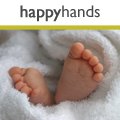Baby Clinic
Bottle Feeding
Sterilising and bottle hygiene
Until your baby is one year old, any feeding items needs to be sterilised, especially milk bottles and any breast pump equipment you might be using.
Cleaning bottles
All equipment should be thoroughly washed after use and before being sterilised. It is advisable to do this by hand rather than in a dishwasher, unless you can thoroughly rinse machine washed items afterwards. A dishwasher is more likely to make teats perish more quickly, too.
Sterilising methods
- Electric steriliser. This is the most convenient way to sterilise several bottles and even pump equipment in one go. They work by heating up a small amount of water and steaming the items at high temperatures. The bottles will remain sterile for a few hours if left inside the steriliser, but follow the guidance on your particular product for safe use.
- Cold water steriliser. Useful if you need to sterilise bottles when you are travelling or not near an electricity supply, this is a bucket of water into which you dissolve a sterilising tablet and then you add your bottles. They will be kept sterile inside for up to 24 hours, and will not need to be rinsed before use.
- Microwaveable steam bags. Useful when you’re on the go, these bags enable you to place the parts of your bottle inside before microwaving the bag for three minutes.
Bottle safety
Over the months bottles and teats will begin to scratch or break up. Make sure you replace any damaged parts with new sets when this happens.
Increasing numbers of feeding bottles are now made ‘Bisphenol-A free’. Bisphenol-A is a common ingredient in many kinds of plastic bottles but there is a concern that exposure to high amounts of this chemical – possibly leached into the liquids stored in the bottle – can be harmful to babies. As a precaution, many parents choose BPA-free bottles.
Storing milk
Once a bottle has milk in it – expressed breastmilk or formula – it should be kept sealed until it is being used. If your baby takes a long time to feed, do not reheat it but make a fresh bottle after an hour or so. Do not put a half-drunk bottle in the fridge for later.
See also Preparing feeding bottles in advance.
Related Articles
ReadingZone: best new books published in October
ReadingZone: best new books published in November
ReadingZone: best new books published in December
ReadingZone: best new books published in January 2011
ReadingZone: The best new books February 2011
New Cupcake Spa in Parson's Green
ReadingZone: The best new books March 2011
ReadingZone: The best new books April 2011
Our pick of children's books for September
Our pick of children's books for October!
Our pick of children's books for November
Christmas books published: December 2011
New books published: January 2012
New books published: February 2012
New books published: March 2012
Symphonic Tots - Music Classes
New books published: April 2012
Train with the top baby massage instructor, Sylvie Hetu
New books published: June 2012
New books published: July 2012
New Books Published: September 2012
New Books Published: October 2012
New Books Published: November 2012
New Books Published: December 2012
New Books Published: December 2012
First Aid training - Why knowing what to do is so important
Preventing and treating poisining with First Aid For Life
Exclusive 10% discount to the BEST Hotels with babies and toddlers
Firework Advice and First Aid tips should something go wrong
Helmets - can they really save lives?
What we all should know about Asthma
Why first aid skills are important for older children and teenagers
Vital first aid tips for Fireworks
Funky Party, food ideas kids will love
What to do when a child is choking
Halloween and Bonfire Night First Aid Tips
Related Products
Purepotions, Chamomile Baby Oil
Image Casting, Baby Foot and Hand Casts
Little Clothing Company, Box Upon a Time
Lala and Bea, Organic Nourish Balm
Have Your Say
Be the first person to comment on this article, just post a comment below.





In order to post a comment you need to be a member. Join Now | Sign in